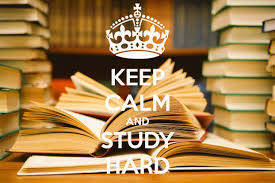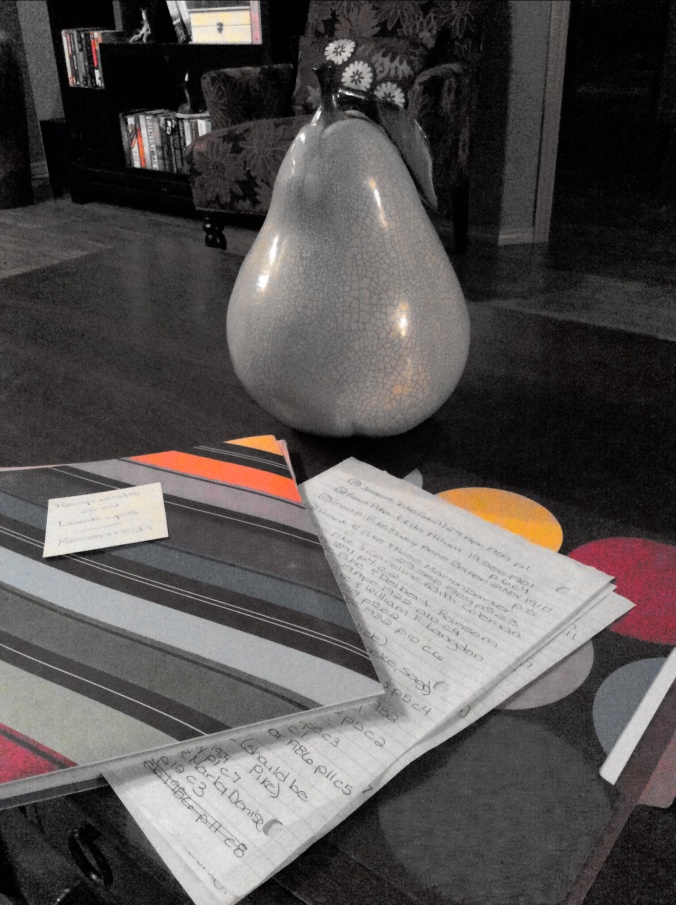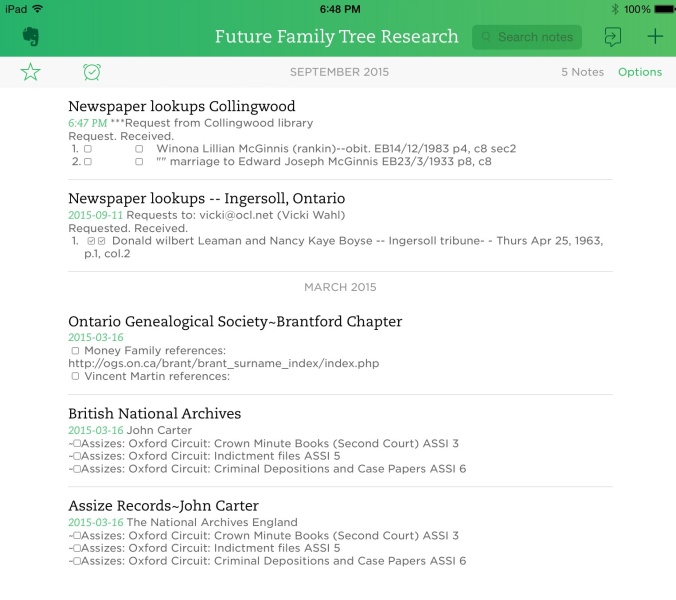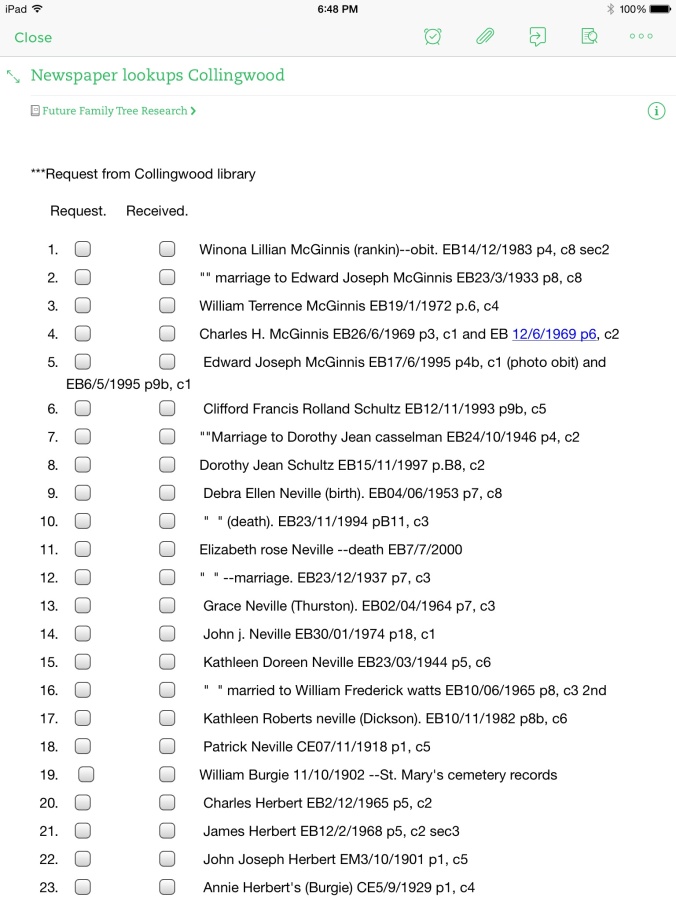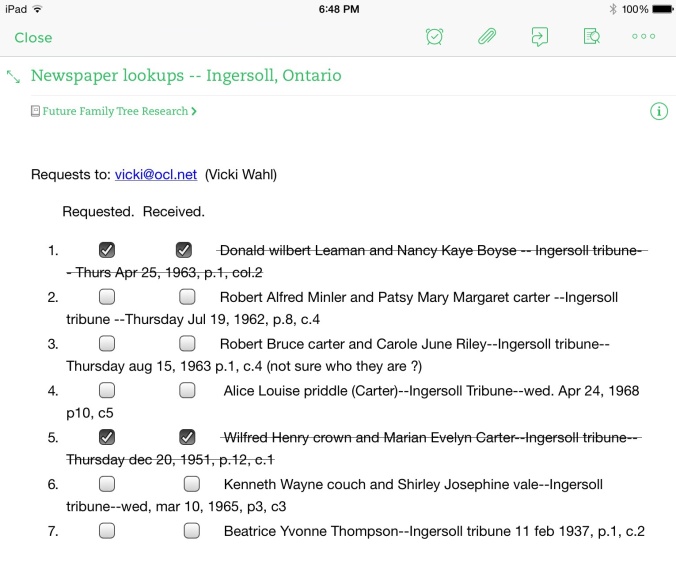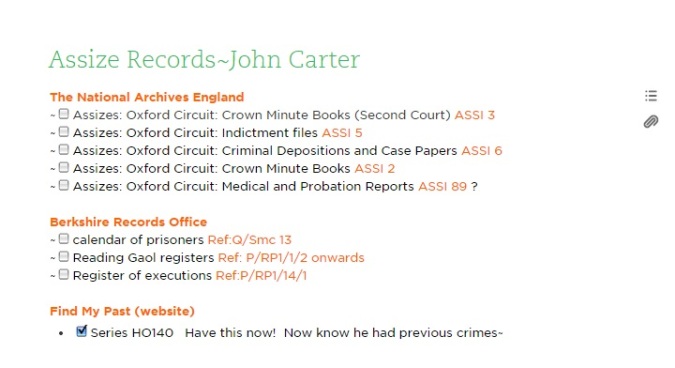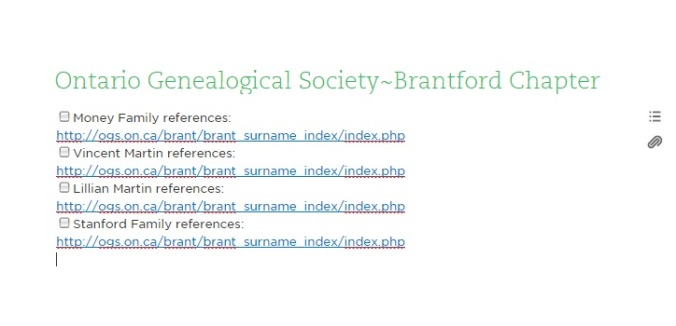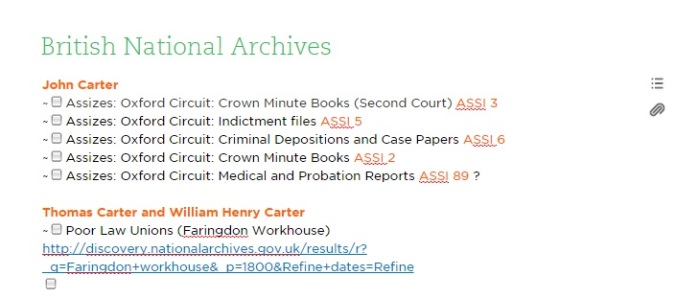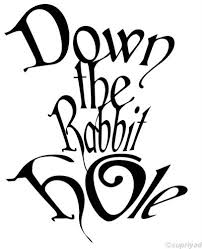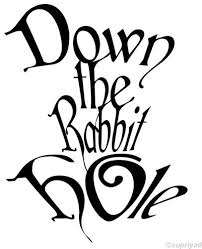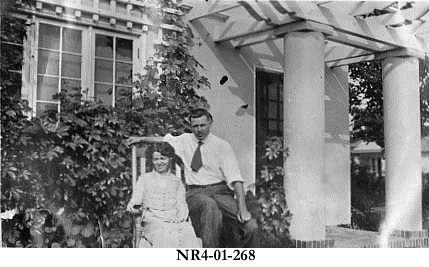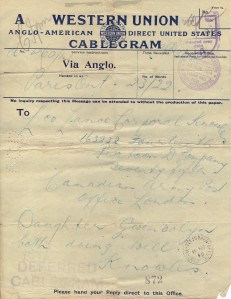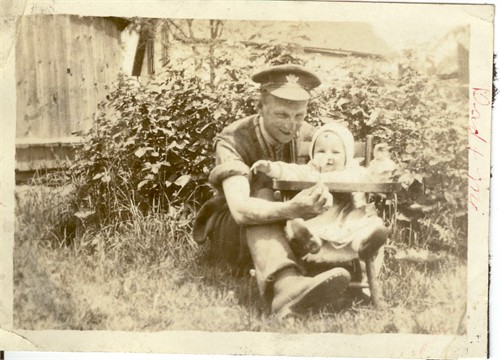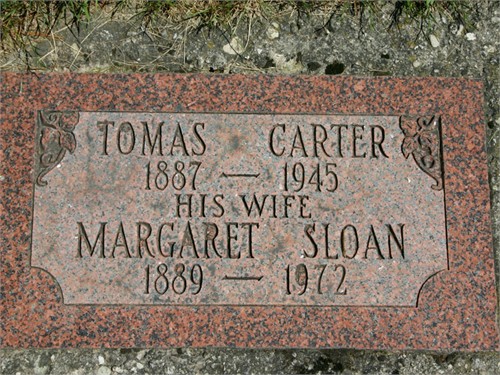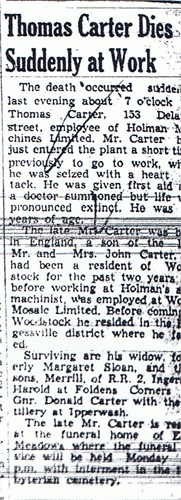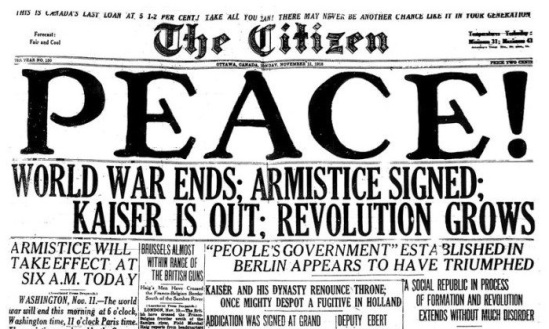
Canadian actor and artist R.H. Thomson embarked on a Remembrance Day art installation to Commemorate and name those who made the ultimate sacrifice during the First World War. His belief, we cannot truly remember if we see the dead as an unnamed collective. I must concur! As Canadians we have yearly sat through somber school and community ceremonies but it seems only now a more recent trend to actually acquaint youth with the individuals who gave their lives. Through the study of wartime letters, the biographies of individual soldiers, visits to European monuments and battlegrounds, and the recreation of World War trenches, students are being immersed in the lives and experiences of soldiers. It is an admirable educational evolution!
619 636 Canadian soldiers enlisted during the First World War, 59 544 lost their lives and in World War II 1.1 million Canadians served. The numbers are astounding and few family genealogies are untouched by these all encompassing wars meant to end all wars! Over a decade ago when I began my personal family history journey delving into the lives of my WWI CEF ancestors was costly and time consuming. While the Library and Archives of Canada provided an online index, one still had to send in a records request, wait for the requests to be processed, and pay substantial amounts of money for files to be copied and mailed, or later scanned and emailed.
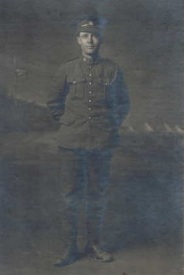
My Maternal Great Grandfather Thomas Carter
The fantastic news has been that for the last five years a Library and Archives Canada project has digitized Canada’s First World War service files in their entirety and made them available online! You can read about the digitization process on the LAC blog.
Most genealogist will be familiar with the information I am presenting in this article however I think the interest in this family research may extend beyond those regularly involved in genealogical pursuits. My hope was that in spreading awareness regarding the increasing accessibility of these records the general public will learn how easy it can be to become acquainted with their ancestors.
One can access the Personnel Records of the First World War database and search by surname and first name and/or your ancestor’s regimental number.
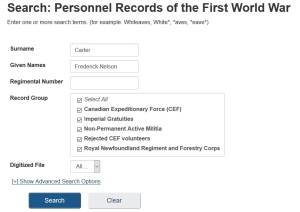
You will be presented with a listing of those entries matching your search from which you may select.
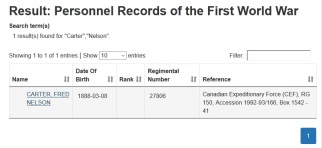
The entry for your selected soldier will include some indexed details, a digital image of the soldier’s initial Attestation Papers, and a link to a PDF of the soldier’s complete service file.
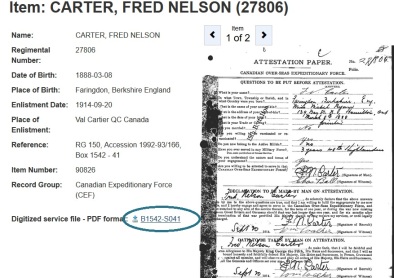
(As an aside, the example I have used is that of my great great uncle, a casualty of the gas attack at the Battle of Ypres in 1915.)
These records may provide one with an initial introduction to one’s ancestor, or perhaps fill in the missing pieces regarding his service. I will write further articles expanding on this path of discovery later this week.
Not one Canadian veteran remains from the First World War. As time plods on fewer and fewer remain from the Second World War, and perhaps it is those ancestors who fought during WWII with which one is intrigued. Many soldiers returned with stories to tell, while trauma prevented others from telling the tales of their experiences. Many Canadians may have known their parents, grandparents, or great grandparents who fought in the second world war but may have known little of their wartime experiences, the battles they fought, and the places they were stationed. The privacy act in Canada is quite stringent and perhaps the idea of these restrictions has deterred people from thoughts of requesting this more recent information.
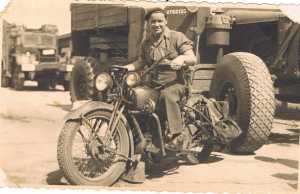
My Uncle Wilfred Crown in Italy during WWII
An online database index exists for those killed in action during World War II. Copies of these records may be ordered traditionally through the “how to obtain copies” link on the main database homepage. These are open records and anyone can request these with only the archival reference information.
All other WWII service files are classified as restricted. This only means they are not accessible to all. If the veteran is living he or she is the only one with access to his/her personal file. The file could then only be released with the written consent of the veteran.
If however the veteran has passed less than 20 years ago limited personal information may be released to immediate family members with proof of relationship and proof of death. Immediate family can include spouse, parent, sibling, child, or grandchild.
The files of veterans who passed more than 20 years ago can be requested by anyone with proof of death. This can include the photo of a headstone or an obituary which are often easy to obtain. All it takes is the completion of a simple application form.
Again, it can take a great deal of time for WWII service file requests to be processed and filled. The application for may be mailed or faxed and Library and Archives Canada send a confirmation letter.
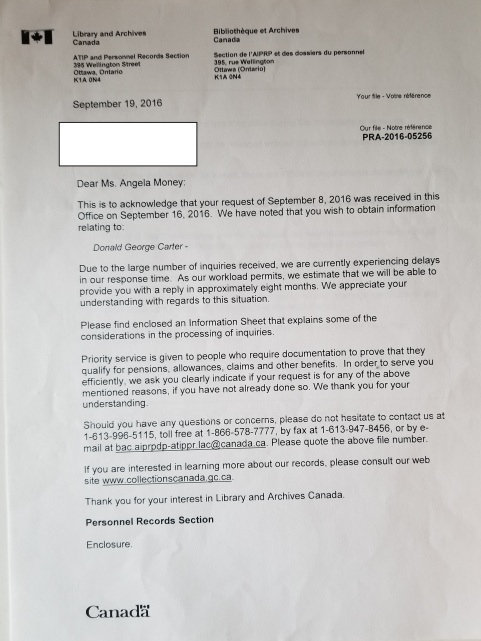
The copies of the service records follow within 6-12 months’ time. This may seem a long wait however the records are provided free of charge which is an amazing public service in my estimation!
This Remembrance Day do something different. Though we continue to thank the collective of veterans and military personnel, stop and take a moment to look at the individuals who comprise that collective. Discover their unique experiences and personalities, and bring them to life for yourselves, your families, and your children!
Being remembered is living forever!

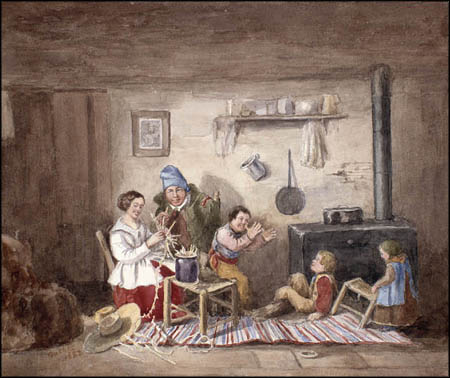
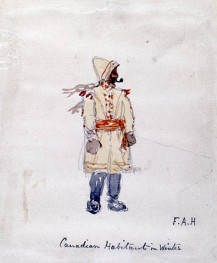 In genealogy, as in many disciplines, it is important to be systematic, bearing this in mind I have decided to produce a series of blog posts introducing novice genealogists to specific French-Canadian document-sets, databases, and resources available online. The hobbiest must understand that genealogical research should venture beyond sites such as Ancestry and Family Search. Seasoned researchers, especially those who began their research prior to the onslaught of the internet, focus much of their research deep within the stacks of the archives. Visiting an archive in person is always preferable but today we are lucky to find more and more archives are updating their websites with digital databases, many including images of original documents.
In genealogy, as in many disciplines, it is important to be systematic, bearing this in mind I have decided to produce a series of blog posts introducing novice genealogists to specific French-Canadian document-sets, databases, and resources available online. The hobbiest must understand that genealogical research should venture beyond sites such as Ancestry and Family Search. Seasoned researchers, especially those who began their research prior to the onslaught of the internet, focus much of their research deep within the stacks of the archives. Visiting an archive in person is always preferable but today we are lucky to find more and more archives are updating their websites with digital databases, many including images of original documents.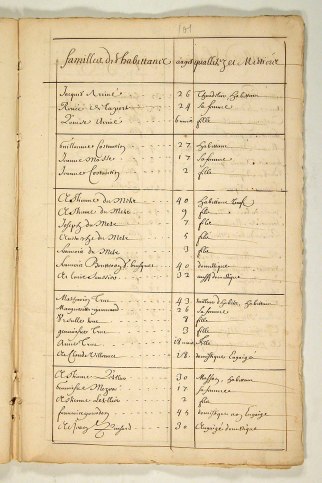
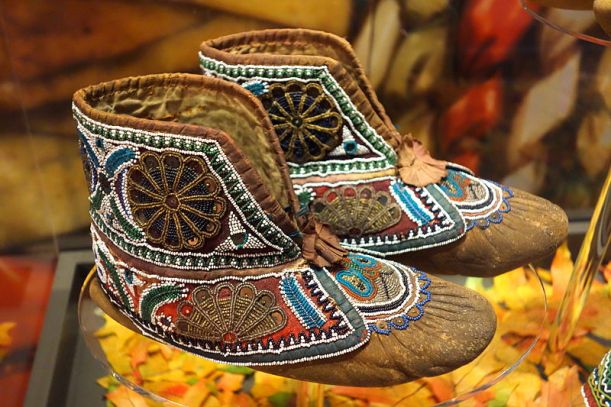
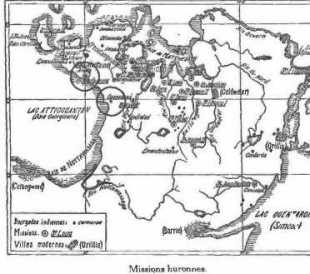 My 8th Great Grandmother was Huron or Wendat (Wyandot). The Wendat people no longer exist as a nation. They were drastically reduced as a result of European introduced disease, and Iroquoian attacks. Those who survived were often assimilated into the other Iroquoian nations. I encountered my 8th Great Grandmother through the Roman Catholic Church parish records (Drouin collection). She had married my French Canadian 8th Great Grandfather and was described as a “Huron”. Her parents were named as was her birth place in a Huron mission in the “land of the Huron” now part of Ontario. While these parish records would seemingly represent the end of the research road they were not.
My 8th Great Grandmother was Huron or Wendat (Wyandot). The Wendat people no longer exist as a nation. They were drastically reduced as a result of European introduced disease, and Iroquoian attacks. Those who survived were often assimilated into the other Iroquoian nations. I encountered my 8th Great Grandmother through the Roman Catholic Church parish records (Drouin collection). She had married my French Canadian 8th Great Grandfather and was described as a “Huron”. Her parents were named as was her birth place in a Huron mission in the “land of the Huron” now part of Ontario. While these parish records would seemingly represent the end of the research road they were not.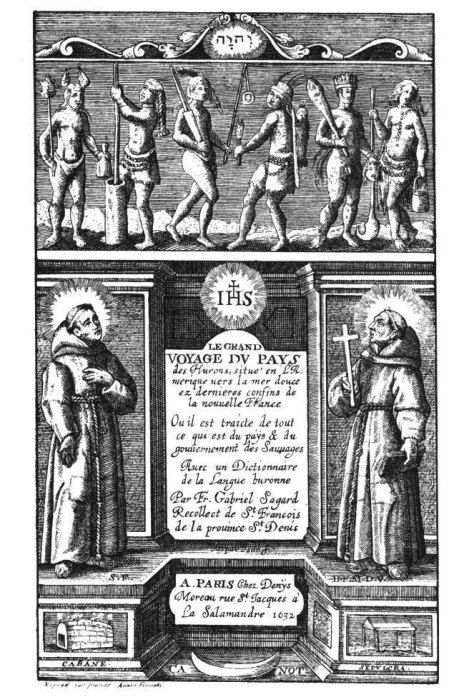 Can one turn to Indigenous oral history interviews to discover the social histories of our ancestors? It is possible, though the value of these oral histories may fade the further you venture into the past. If ones researching First Nations ancestors in more recent generations the options are more varied and available.
Can one turn to Indigenous oral history interviews to discover the social histories of our ancestors? It is possible, though the value of these oral histories may fade the further you venture into the past. If ones researching First Nations ancestors in more recent generations the options are more varied and available.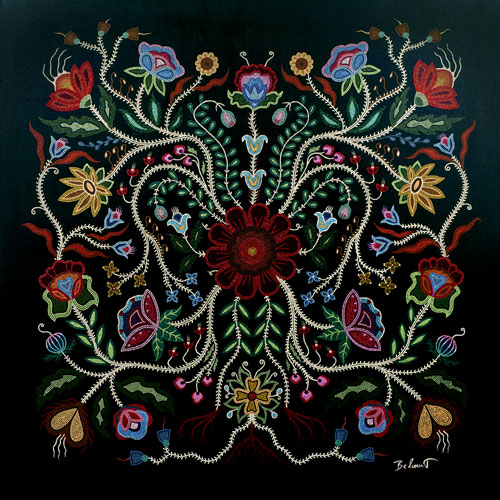 We must remember that First Nations is meant to indicate a multitude of indigenous nations. As a first step attempt to determine which nation to which your ancestor belongs. It is this knowledge which will provide a starting point when determining available sources. What region of Canada might your ancestor have lived in? In what treaty area? Consider the time frame. Then begin! Research the particular First Nation through history books and ethnographies to determine what was happening during the period of interest and perhaps what documentation might be relevant.
We must remember that First Nations is meant to indicate a multitude of indigenous nations. As a first step attempt to determine which nation to which your ancestor belongs. It is this knowledge which will provide a starting point when determining available sources. What region of Canada might your ancestor have lived in? In what treaty area? Consider the time frame. Then begin! Research the particular First Nation through history books and ethnographies to determine what was happening during the period of interest and perhaps what documentation might be relevant.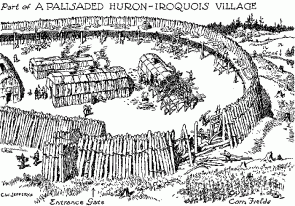 Look to archaeology reports to gain a greater understanding of the life of your ancestors pre-contact. Archaeological societies exist for most provinces and publish regular journals. Here are two examples of archaeological reports from a Huron site I once worked on:
Look to archaeology reports to gain a greater understanding of the life of your ancestors pre-contact. Archaeological societies exist for most provinces and publish regular journals. Here are two examples of archaeological reports from a Huron site I once worked on:
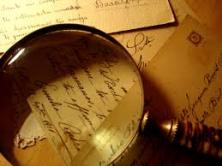 genealogist. I had the aptitude and I was able to search out the resources to help me develop my abilities. Webinars, my own trial and error, reading blogs, articles and books have all been my learning tools but in January I decided I wanted to pursue my passion more seriously. I want to be taken seriously as a genealogist, I want to build credentials, and I want to be able to legitimately provide services and assistance to others in search of their family’s past.
genealogist. I had the aptitude and I was able to search out the resources to help me develop my abilities. Webinars, my own trial and error, reading blogs, articles and books have all been my learning tools but in January I decided I wanted to pursue my passion more seriously. I want to be taken seriously as a genealogist, I want to build credentials, and I want to be able to legitimately provide services and assistance to others in search of their family’s past.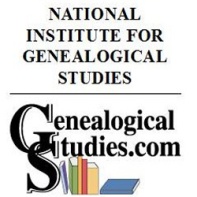 The Certificate in Genealogical Studies — Canadian Records is a 40 course program resulting in a certificate and post-nominals (PLCGS). I have completed 7 of the 9 Basic Level courses and will be taking the final 2 basic courses this coming month. Completely online, each course includes module readings, assignments, an exam, and optional live stream chats. The program includes required Basic, Intermediate, and Advanced level courses as well as elective courses which can be selected from a wide menu of choices. Most courses are about two months long however you can work ahead if you wish. You are allotted approximately 2 years for several of the culminating analysis courses which appear to be more intensive. I enjoy working at my own pace!
The Certificate in Genealogical Studies — Canadian Records is a 40 course program resulting in a certificate and post-nominals (PLCGS). I have completed 7 of the 9 Basic Level courses and will be taking the final 2 basic courses this coming month. Completely online, each course includes module readings, assignments, an exam, and optional live stream chats. The program includes required Basic, Intermediate, and Advanced level courses as well as elective courses which can be selected from a wide menu of choices. Most courses are about two months long however you can work ahead if you wish. You are allotted approximately 2 years for several of the culminating analysis courses which appear to be more intensive. I enjoy working at my own pace!